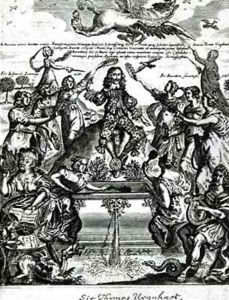George Glover Paintings
George Glover was an English artist known for his work as an engraver during the 17th century. Born in 1618, Glover's contributions to the art world came at a time when engraving was an essential means of reproducing and disseminating images and texts. This period was marked by significant social, political, and religious upheaval, which often found its way into the art of the era. Glover's work, like that of many of his contemporaries, was influenced by the turbulent times in which he lived, offering a window into the cultural and historical context of 17th-century England.
Glover's career as an engraver involved the creation of images by incising designs onto a hard surface, such as copper or wood, which could then be inked and pressed onto paper. This technique allowed for the mass production of images, making Glover's work accessible to a broader audience. His engravings covered a range of subjects, from portraits and landscapes to illustrations of biblical and mythological scenes, reflecting the varied interests and tastes of the period.
Despite the significance of his contributions to the art of engraving, detailed records of Glover's life and work are relatively scarce, as is often the case with artists from this era. What is known suggests that he was a skilled craftsman who managed to navigate the challenges of his time to produce work that was both aesthetically pleasing and commercially viable. After a career that spanned several decades, George Glover died in 1683, leaving behind a body of work that continues to be studied by art historians and appreciated by connoisseurs of fine engravings.
While George Glover may not be as widely recognized as some of his contemporaries, his work is an important part of the history of engraving. His contributions helped to shape the development of the medium, influencing future generations of artists. Today, Glover's engravings are valuable not only for their artistic merit but also for the insight they provide into the cultural and historical milieu of 17th-century England.

